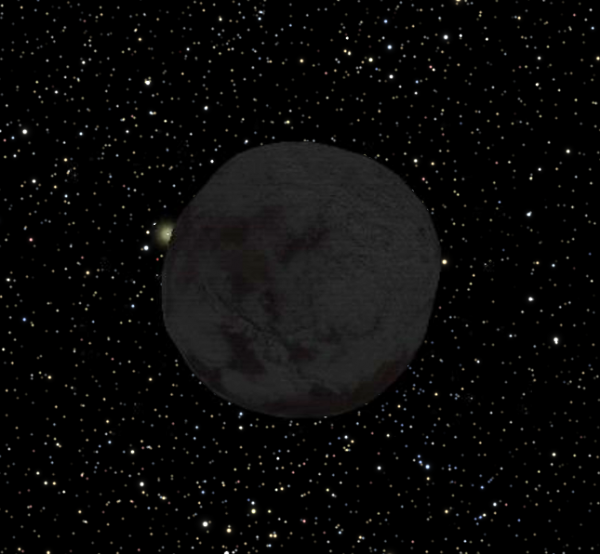BY LETTER
Stevensonian Class Worlds
Planetary mass objects found in interstellar space | |
 Image from John M Dollan and Steve Bowers | |
| Slippery Dave, a Stevensonian class planet ten light years from Antares | |
Stevensonian worlds, also known as Planetary Mass Objects (PLANEMOS), are former planets that have left their solar system of origin and reside in interstellar space. They are more numerous than planets, but are difficult to find.
The formation of a solar system is a chaotic process that brings about order. Hundreds of planets may form, all orbiting together, colliding, shattering, reforming. But as the millions of years continue, a process of attrition occurs, whereas most of these worlds are eventually lost. Many are shattered and incorporated into the growth of other worlds. Many more are tossed into the central sun. And a great many indeed are tossed out into the emptiness of interstellar space.
For the most part, these are cold and lifeless worlds, whatever atmospheres that they might have once had long since frozen out onto the surface and as hard as granite. Even a helium atmosphere would collapse to liquid form at the temperature of the Cosmic Microwave Background.
But some worlds remain heated by their internal fires, forever dark wanderers that glow in the infrared like the last ember of a camp fire. Other worlds are gas giants, shrunken and quiescent, the tops of their clouds lost in perpetual blizzards, while in their depths the heat of their mass continues unabated, churning the atmosphere below like a boiling cauldron. Some of the coldest gas worlds in deep space have helium atmospheres with white hydrogen clouds; but many others are heated by internal radiation or by ongoing gravitational collapse.
Some Stevensonian worlds have large rocky or metallic cores, and these cores are quite often warm and even remain geologically active for billions of years. A small fraction of such worlds have reservoirs of liquid water beneath layers of ice, and a very few even have chemotrophic biospheres.
It is an irony that these worlds are very common indeed, with an average solar system perhaps losing fifty or more such worlds in the first hundred million years of formation. Indeed, they form an appreciable amount of the dark mass of the universe. But they are difficult to find, utterly lost to the blackness and detectable only by the faint gravitational effects on light that the larger massed worlds have.
These worlds are prized by Hiders and Backgrounder clades, especially the worlds with internal heat sources. It is rumoured that a large number of Hider worlds of this type exist between the stars, unknown to even the Sephirotic Archailects; but it is also said that if the Hiders can find them, then so can the AI Gods.
Examples of Stevensonian Class worlds in deep space; Niaanyo, Hyxuym
Related Articles
Appears in Topics
Development Notes
Text by John M. Dollan and Steve Bowers
Initially published on 30 December 2009.
The Possibility of Life-Sustaining Planets in Interstellar Space
Initially published on 30 December 2009.
References
Letter to Nature by David Stevenson:The Possibility of Life-Sustaining Planets in Interstellar Space






